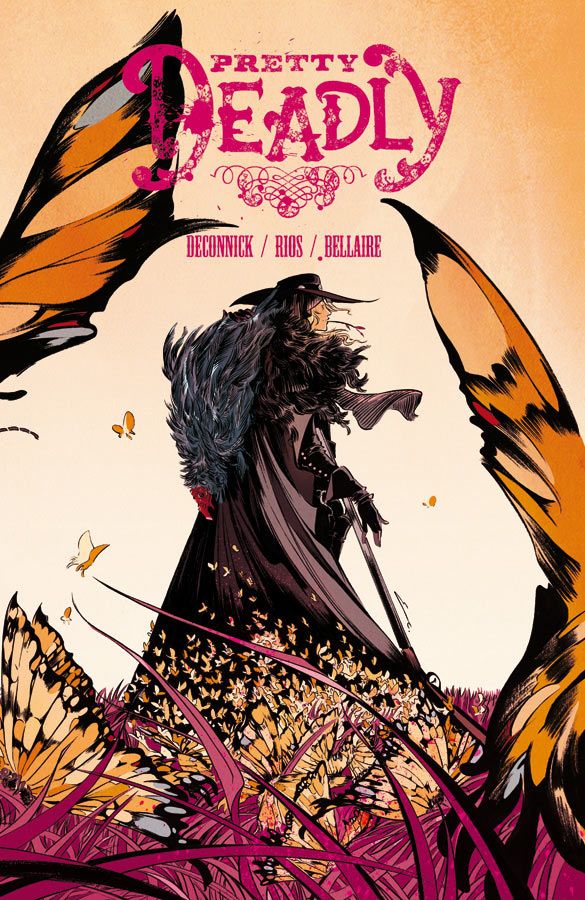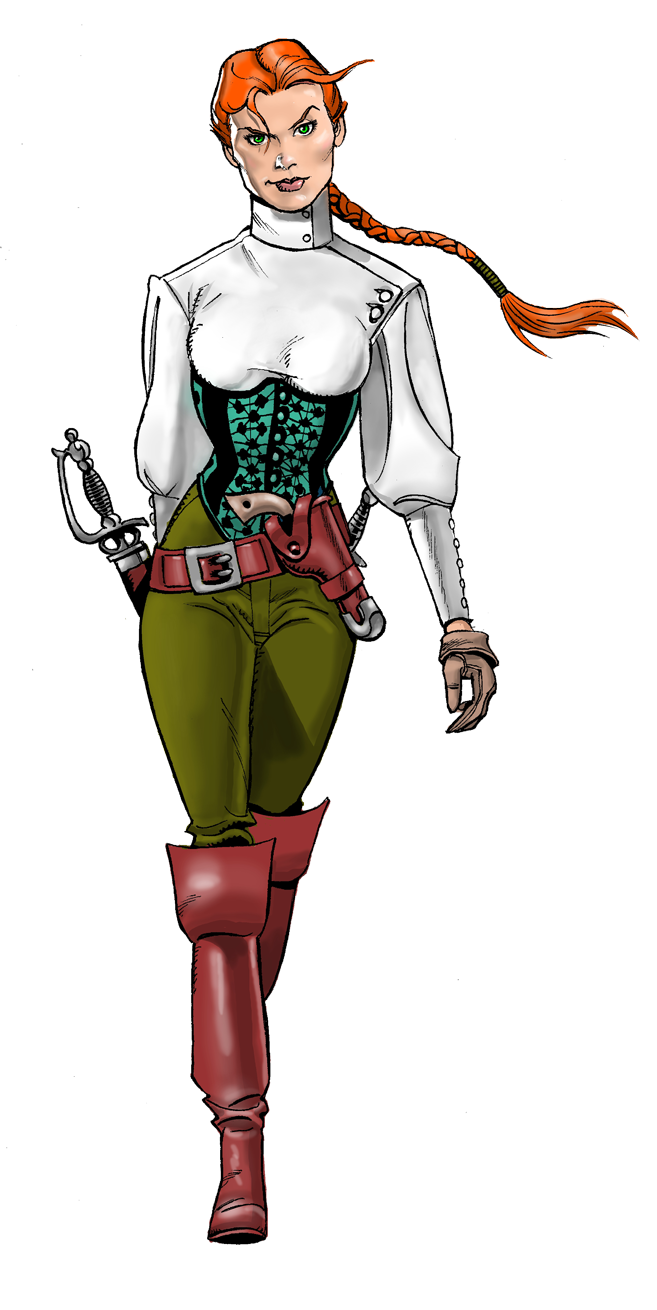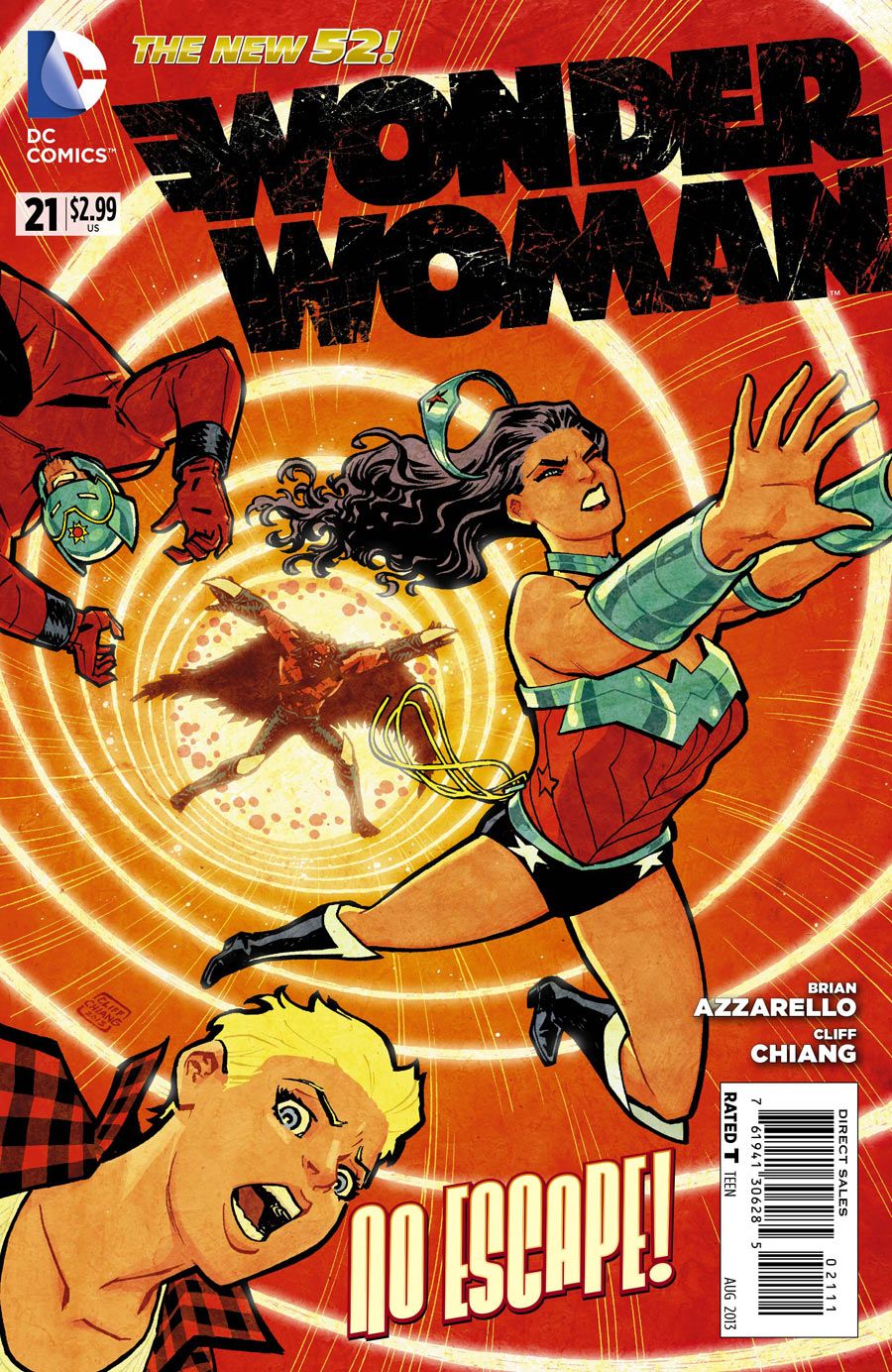Friday afternoon saw a flood of fans pouring into the Anaheim convention center third floor room for the "Strong Women And The Creators Who Empower Them" panel, part of WonderCon Anaheim 2014. Moderated by writer James Robinson, the panel began as those creators filed in: artist Rick Burchett ("Lady Sabre And The Pirates Of The Ineffable Aether"), writer Kelly Sue DeConnick ("Captain Marvel"), artist Cliff Chiang ("Wonder Woman"), artist Georges Jeanty ("Buffy The Vampire Slayer") and writer Gail Simone ("Batgirl," "Red Sonja"). Unfortunately, the only person not present was Robinson, a fact the panelists jokingly pointed out.
"What should we do if he doesn't show up? Karaoke?" DeConnick asked.
"Does anybody know 'Once More, With Feeling?'" Jeanty joked, referencing the "Buffy" sing-along episode as the audience burst into laughter.
The room cracked up again as Robinson ran in, leading everyone in a round of applause for the panelists as he caught his breath. He then praised those present for their work in the comics industry, jokingly adding wrong information for DeConnick, who laughed as he insisted she was the writer of "Captain America."
Officially kicking the panel off, Robinson began by asking how they, as artists and writers, defined a "strong female character."
"I think in visualizing strong female characters you have to consider that the strength of any strong character -- male, female, dog, cat, whatever -- comes from within. The way you approach that is through facial expression, body language," Burchett said, speaking from the artist's point of view.
"What I'm looking for in a character of either gender, and unfortunately it's the women who are most often shafted in this sense, is that I'm looking for agency," DeConnick said. "They need to have something that they want, an interior life, and what happens with female characters frequently is...you can rob them of that and turn them into a plot device."
She then explained she likes to use a test she calls the "sexy lamp test."
"If you can take the woman out and replace her with a sexy lamp and the story is the same, then fuck you," DeConnick said as the audience laughed. The room cracked up again as DeConnick apologized for swearing, looking around to make sure there were no children present.
Chiang agreed with DeConnick and told the audience he felt creating a great female character begins with the writing.
"You want to have some mystery, you want to have some intelligence, you want to have some compassion for these characters. If you lose that, then you start seeing people as objects," Chiang said. "For me you really need a good script."
"I was really lucky coming into strong female characters working with Joss Whedon, who is probably one of the best writers of strong female characters," Jeanty added. The artist, however, hadn't been a fan of the show, so when he first got the job he was initially disturbed by the violence Buffy faced on a regular basis.
"She hits back!" Simone pointed out.
Jeanty agreed and explained that his take on drawing Buffy in physical danger, but in a way that wasn't exploitative, clicked after seeing the Tina Turner biographical movie "What's Love Got To Do With It?"
"There's a scene in the film where she [Tina Turner] finally fights back [against abusive husband Ike Turner] because she's so tired of it and she gets her ass kicked...she's just bruised and bloodied but she's carrying herself as a woman...and that's when it struck me, her strength came through not because she fought back but because of her coming to a place where nobody would know what happened or they'd think, 'What's wrong with you?' and she's just this women carrying herself with such a sense of dignity and strength," Jeanty said. "I was looking at that with Buffy and putting that into her."
Simone added that there is a wider "gender spectrum" to write for other than just "this is a strong female, this is a strong male." She said that part of the reason she is writing several female solo books, something she vowed never to do early in her career for fear of being labeled as only a "female writer," was because, "I wanted to prove we could have numerous [female-led] books where none of them were the same."
DeConnick chimed in that given the uneven number of men to women in the comics industry and Hollywood, "I'm putting women forward as much as humanly possibly to even the scale!"
This lead to a discussion about how sometimes there is a disconnect between the woman in the script and the way an artist decides to draw her. Simone touched on her creation of Scandal Savage as an example.
"I wanted her to be very short, strong, and that's the way she was designed in the beginning -- and over time she gets taller, bustier, slimmer, more curvy. I'm like, 'Remember, she's supposed to have this certain body type that we haven't really seen in two hundred female characters,'" Simone said.
"I had really big balls on Buffy," Jeanty began, laughing as DeConnick interjected "Ovaries!" The "Buffy" artist continued that he had the reverse experience and would challenge writers on visual depictions of Buffy to make sure she always had a reason for her actions on panel. Chiang too stated he had to push back against writers or editors with cover ideas that would portray the female characters he's drawn in vulnerable positions.
"They end up pitching things...where the drama comes from her needing to be rescued somehow," Chiang said. "She can be in trouble, but she doesn't need to be completely out of control."
Burchett attributed his involvement in illustrating strong women to his working relationship with writer Greg Rucka.
"I try to make them individuals...I draw the script, I try to enhance the script, and if you're working with a strong writer like Greg is, you just draw what's there and you're fine," Burchett said.
DeConnick expressed frustration at the fact that in the past the art paired with her stories was sexist and there was nothing she could do about it, either because of rushed deadlines or simply not having enough clout in the company. The "Captain Marvel" writer then regaled the audience with a story of trying to fix one example of egregious female art while at Marvel.
"I just did an arc with Warren Ellis, and no one else on the planet can get away with this because I think this is harassment, but Warren felt there was a depiction of Spider-Women where her waist seemed not to contain organs," DeConnick recalled. Attempting to mimic Ellis' quiet English accent, she continued, "He said, 'Yes you should fix that or else I will come to your house and nail your feet to the floor and set your house on fire.'"
"And it totally got fixed!" DeConnick said as the room cracked up.
In the vein of depicting women realistically, Burchett told the audience that while "we [in comics] deal in fantasy," women have been objectified more then men. However, the artist was optimistic and said he saw a future with more athletic-looking female protagonists, adding that he heard somewhere that "46 percent of readers are female."
"With a change in the audience, with new artists...with comics being respectable for the first time in its long history, I think there's going to be a change," Burchett added.
DeConnick then said she had issues with people who confuse fantasy with sexism.
"We hear a lot of, 'But ladies, the dudes are idealized too,'" DeConnick said, pausing as the audience booed that statement. "Men are idealized for strength and women for sexual availability."
DeConnick also pointed out that comics used to be read by everybody, male and female. "That was the readership that kept the industry alive," DeConnick said.
"Simon and Kirby did romance comics, and those sold millions every month," Burchett added.
Simone named the devaluation of female readers over the decades as a reason characters like Lois Lane became significantly weaker, appearing not as a journalist in her own right but as a girlfriend and then simply a love interest. Robinson agreed, adding he felt a problem comics had in the 1970s was that many of the male writers of the time equated "strong" women with "bitches."
Before opening the floor to the audience for questions, Robinson asked each panelist to name their proudest moment as a creator. Simone recalled when she first began on "Birds Of Prey" her goal was to write a story where the female characters had conflicting points of view but were not portrayed as catty or as man crazy.
"[Or] they are only ever eating salads or ice cream!" DeConnick joked as Simone laughed.
Jeanty stated his proudest moment working on "Buffy" was simply interacting with female fans who told him they had become comic book readers because of the "Buffy" comic.
Chiang also praised his "Wonder Woman" fans and said one of his proudest moments was working on "Greendale" with Joshua Dysart. DeConnick named her work with We Love Fine on the Carol Corps clothing line, which raises money for a leadership scholarship for girls, as her proudest achievement.
Burchett stated that helping create "Lady Sabre" was a highlight for him. Robinson wrapped up his moderating by adding that he was proud of writing "Justice League" with a cast of multiple female protagonists.
Beginning the audience Q&A portion of the panel, the first fan question came from a woman wearing a Captain Marvel-inspired dress who asked if there were specific mistreated female characters the panel would love to rehabilitate.
"Donna Troy," Chiang said. Simone said there were too many to name, and Burchett recommended, "putting a few pounds back on Amanda Waller!" to cheers and whistles.
The next fan to the microphone asked if there's anything the panelists would like to see a female character do that they haven't seen already in comics.
"Physically grow older," Jeanty suggested as DeConnick stated she would like to see more women competing and remaining friends in comics.
A fan of DeConnick and Simone asked how the writers portrayed women with weaknesses believably, and how they avoided the impulse to overpower their characters.
"Yellow and wood!" DeConnick joked as the panelists laughed.
Simone stated that she felt Batgirl's post-traumatic stress disorder was a believable weakness and that part of Batgirl's strength came from overcoming her fears. DeConnick added that Carol Danvers' alcoholism was another weakness she felt was believable and one that explains Captain Marvel's fierce independence and inability to play well with others.
The next audience member asked DeConnick and Simone how they dealt with sexist continuity. Speaking about writing "Wonder Woman," Simone said that she never liked Diana's Goddess-birth origin as she felt that it was too "nice."
"I've given birth. I hate to let you know, that's not what it's like," Simone joked. She continued that when she got the chance to mess with the character and the series she added "stress and blood and fear" to the origin. "I think it made a lot of people at DC very uncomfortable, because that was not what they expected," Simone said.
Simone also stated she does not like the Red Sonja rape origin as she feels Sonja is not "a prize to be won," and is similarly trying to redefine the barbarian fighter in her solo title. "It's very clear this is a new Red Sonja where she's no one's prize," Simone said.
An older male fan asked the panel how they wrote female characters as strong without making them two-dimensional "b-words."
"Just pretend they're people!" DeConnick said to thunderous applause. "If it's really problematic, write them all as men and change the names!"
"We've gotten really used to the dial turned up to way too sexy," Chiang added. "We do have to speak out about it. It's not like if I'm drawing, my hand slips and suddenly it's too sexy! Ok, that is a thong you drew...that was a conscious choice."
With scant minutes remaining, a "Secret Six" fan asked Simone what she would like to see in the New 52 in terms of adding or rehabilitating female characters. Simone told him she couldn't talk too much about it as she was privy to some plans in the works for new female characters.
"I just want variety, that is my main thing," Simone said.
Robinson then overrode the WonderCon timekeeper to let a female fan ask the panelists if they thought Marvel and DC would ever make a fat super heroine.
"I'm 180 pounds and I can do a lot, I could kick a lot of butt!" the fan said as the audience cheered, adding, "I don't want to be the 'fat' Poison Ivy or the 'fat' Harley Quinn, I just want to be a character."
Simone reiterated the issues she had with Scandal Savage, stating that she always tries to create diverse body shapes but mainstream artists need to come around to that thinking, too.
"I find it limiting when you draw these body types over and over again...they should all look different, they should all feel different," Chiang said.
"You should probably pick up my next Image book," DeConnick said as the audience gasped and laughed.
Burchett again cited his belief that the industry is changing for the better due to the influx of women. When it came to adding diversity, "That's our job, and I'm sure we'll do it," Burchett concluded.
Robinson then laughingly gave in to the WonderCon timekeeper at the back of the room and ended the panel while fans, male and female, gave them a standing ovation.




